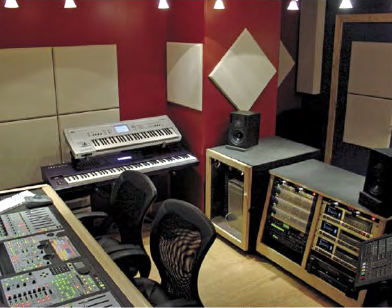This is the original full length overture from the premiere of my theatre work “Romeo and Juliet the musical” which premiered February 2015 at the Historic Lincoln Theatre in Mount Vernon, WA.
Sibelius and MainStage for Music Scoring
(Score sample of Keyboard Two part from Conrad Askland’s “Romeo and Juliet – the musical”, July 2014)
As I’m working on orchestrations for my third full length musical, “Romeo and Juliet” (http://www.RJmusical.com), I realize the need for a particular scoring approach for the Keyboard Two part. Here is the solution I came up with to incorporate Apple’s MainStage with Sibelius for use in orchestrations and creating the final Keyboard Two patch setup.
Basic Drum Notation Tips
I’ve just had the very frustrating experience of scoring the drum part for half of an entire musical theater score, and doing it wrong. Arghh! I got some bad advice so I’m posting some clarification here for other arrangers that are new to scoring drum parts. Hopefully this will save you some headaches.
Rob Reid: The $8 billion iPod
httpv://www.youtube.com/watch?v=GZadCj8O1-0
http://www.ted.com Comic author Rob Reid unveils Copyright Math (TM), a remarkable new field of study based on actual numbers from entertainment industry lawyers and lobbyists.
165 Million Year Old Cricket Song
http://www.bristol.ac.uk/news/2012/8210.html
Excerpt:
The love song of an extinct cricket that lived 165 million years ago has been brought back to life by scientists at the University of Bristol. The song – possibly the most ancient known musical song documented to date – was reconstructed from microscopic wing features on a fossil discovered in North East China. It allows us to listen to one of the sounds that would have been heard by dinosaurs and other creatures roaming Jurassic forests at night.
httpv://www.youtube.com/watch?v=pT9PlgoXXhk
Q&A: How to play AAC audio files on website?
Email question received:
no problem getting my site to play mp3 files, but what do you do if you’ve got an AAC file that you want people to hear.
************************
Response:
Hey there, great question! What I found is that Adobe Flash supports AAC, so you could use a flashplayer to stream your AAC music files. From what I read it appears there are some other players also but they only support internet explorer. I’m assuming that you want your solution to be cross platform. It also looks like Orbis may have some players but you have to purchase them.
Continue reading “Q&A: How to play AAC audio files on website?”
Acoustic Treatment for Audio Mixing Room
As part of my Critical Listening class with Berklee Music Online I’ve been spending a lot of time tweaking my audio mixing room. The point is to level out the environment at the listening position for an audio response that minimizes comb filtering and nodes that cancel out frequencies. If the problem is not minimized, at least knowing the frequency problem areas can give you crucial information so you don’t over adjust in the final mixes.
Bruce Swedien – Keeping the Mix Primitive
httpv://www.youtube.com/watch?v=jo52yszIfPw
Audio engineer Bruce Swedien talks about keeping the mix primitive. Years ago I had his video series on microphone usage. The big tip I picked up from that was to use microphones to capture part of the room. Using microphone pairs to combine the source and ambient reflections. Also started to record keyboard parts going through amps rather than direct to the console.
I think it’s a wonderful approach to sound design and engineering. I’ve also always enjoyed Bruce Swedien’s low profile presentation. Most of us producing music these days are guilty at one point or another of getting too involved in the gear. I guess like with most studies the key is to study the details and geeky procedures as much as you can – but then forget all that and do your thing when it comes to your productions. Swedien really emphasizes the important of not losing the root passion of the music.
Continue reading “Bruce Swedien – Keeping the Mix Primitive”
Pan Law – Recording and Mixing
Pan Law, in practical application, states that an audio source, of equal amplitude and phase, that is played in both channels of a stereo system and panned from center to left or right will sound natural to increase 3db.
Read the Wikipedia link below for more details. (Actual change is 6.02db for perfect response and perfect acoustics, but practical application for most speaker setups is to think 3db).
Read more at: http://en.wikipedia.org/wiki/Pan_law
Email Q&A: Who wrote Ave Maria
Email question received:
I read quite a few articles on the internet but still not sure who actually first composed Ave Maria, despite so many name changes to the music. I read that Bach, Schubert and Gounod were at least the three persons associated with Ave Maria but separated by hundreds of years apart. The music on Youtube and other places are the same for all three. Can you tell me?



